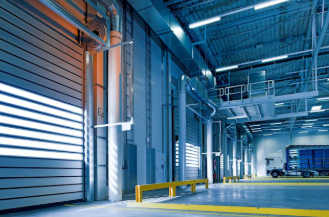In today’s fast-paced and automation-driven industries, precision and reliability are non-negotiable. From object detection to distance measurement, radar sensors are becoming a vital technology in industrial environments. This guide explores everything you need to know about radar sensors for industrial applications, including how they work, key advantages, use cases, and how they compare to other sensing technologies.
What is a Radar Sensor?
A radar sensor (Radio Detection and Ranging) is an electronic device that uses radio waves to detect the presence, position, movement, and speed of objects. Unlike optical sensors that rely on visible light, radar sensors use electromagnetic waves to penetrate dust, smoke, fog, and even non-metallic enclosures—making them ideal for harsh industrial environments.
These sensors emit radio waves, which bounce back after hitting an object. The sensor then analyzes the return signal to determine an object’s distance, angle, or speed.
How Radar Sensors Work
The core working principle of a radar sensor includes:
- Transmission: The sensor emits a radio frequency signal.
- Reflection: The signal hits an object and reflects back.
- Reception: The sensor receives the reflected signal.
- Processing: Internal software analyzes time delay, frequency shift (Doppler effect), and phase to determine distance, velocity, or movement direction.
Industrial radar sensors typically operate in frequency bands like 24 GHz, 60 GHz, or 77 GHz, depending on the application and range requirements.
Advantages of Radar Sensors in Industrial Applications
Radar sensors offer several unique benefits over other sensing technologies such as ultrasonic or infrared:
✅ 1. Works in Harsh Conditions
Radar sensors can perform in extreme temperatures, dirty or dusty environments, and through smoke, fog, or rain—making them ideal for factories, chemical plants, and outdoor installations.
✅ 2. Non-Contact and Wear-Free
They don’t rely on physical contact with the target, minimizing wear and tear and reducing maintenance.
✅ 3. High Precision and Long Range
Radar sensors can detect small objects from several meters away, with high accuracy and repeatability, even when the object is moving.
✅ 4. Insensitive to Surface Color or Transparency
Unlike optical sensors, radar sensors are unaffected by object color, material, or transparency.
✅ 5. Motion Detection and Speed Measurement
With Doppler shift technology, radar sensors can accurately measure the speed and direction of moving targets.
Types of Radar Sensors Used in Industry
🔹 1. Continuous Wave (CW) Radar
Used for measuring speed by detecting frequency shifts. Ideal for conveyor belts, rotating machinery, and object tracking.
🔹 2. Frequency Modulated Continuous Wave (FMCW) Radar
Measures both distance and velocity. Used in level measurement, positioning systems, and automated guided vehicles (AGVs).
🔹 3. Pulse Radar
Sends high-energy pulses to detect objects at longer ranges. Useful in outdoor or large-scale industrial environments.
Key Industrial Applications of Radar Sensors
🏭 1. Level Measurement
Radar sensors are widely used to measure liquid and solid levels in tanks, silos, and hoppers—especially in industries like oil & gas, food processing, and water treatment.
- Non-contact operation avoids contamination.
- Handles foaming, turbulent, or corrosive media.
🚧 2. Object Detection
Used in robotic systems, automated forklifts, or industrial doors to detect obstacles and ensure safe movement.
- Detects objects regardless of material or lighting.
- High-speed detection prevents collisions.
🏗️ 3. Distance and Position Measurement
Radar sensors are used to measure distance or alignment in packaging, automotive assembly, and logistics.
- Enables precise positioning of machinery or parts.
- Ensures consistency in production lines.
🚀 4. Speed Monitoring
Ideal for conveyor systems and rotating machinery, radar sensors detect movement speed and detect abnormalities in real time.
🚧 5. Industrial Safety
Radar technology enhances worker and equipment safety by monitoring restricted zones or activating emergency stops when unauthorized access is detected.
- Works through plastic covers or protective barriers.
- Immune to environmental interference.
Radar Sensor vs. Ultrasonic and Optical Sensors
| Feature | Radar Sensor | Ultrasonic Sensor | Optical Sensor |
| Operating Principle | Radio waves | Sound waves | Light waves |
| Range | Up to 100m | Short to medium | Medium |
| Environmental Resistance | Excellent | Affected by temperature/humidity | Poor in dusty/foggy conditions |
| Target Sensitivity | Works with most materials | Best with solids/liquids | Sensitive to reflectivity and color |
| Cost | Medium-High | Low | Medium |
While ultrasonic and optical sensors are useful for basic tasks, radar sensors provide a robust and reliable solution for demanding environments.
Choosing the Right Radar Sensor
When selecting a radar sensor for industrial applications, consider the following:
1. Range Requirements
Determine how far the sensor needs to detect objects or measure levels.
2. Environmental Conditions
Choose sensors with appropriate ingress protection (IP) ratings for dust, moisture, or temperature extremes.
3. Mounting Flexibility
Consider sensor size, mounting options, and angle of operation.
4. Data Output
Select sensors with analog, digital, IO-Link, or industrial protocol outputs (like Modbus, PROFINET) for easy integration.
5. Target Object Characteristics
Ensure the radar frequency and beam angle match the expected object size and surface type.
Integration with Industry 4.0 and IIoT
Radar sensors are evolving to support smart manufacturing. Many modern sensors come with IO-Link or wireless capabilities, enabling:
- Real-time data transmission to cloud platforms
- Remote diagnostics and calibration
- Predictive maintenance and machine learning analytics
Radar sensors contribute significantly to Industry 4.0, enabling data-driven automation in production, logistics, and infrastructure.
Real-World Example: Radar Sensors in Mining
In the mining industry, traditional level sensors often fail due to dust, noise, and vibrations. Radar sensors, however, are used to:
- Monitor stockpile levels
- Control crushing machines
- Manage load-out systems
Their non-contact nature and rugged design make them the preferred choice for reliable performance in extreme conditions.
Future of Radar Technology in Industry
With advancements in millimeter-wave radar, AI integration, and miniaturization, radar sensors are becoming smarter and more affordable. Expect to see:
- Compact sensors in collaborative robots
- AI-enabled detection in autonomous mobile robots (AMRs)
- Expanded use in smart cities and infrastructure monitoring
Conclusion
A radar sensor for industrial applications offers a powerful combination of durability, accuracy, and versatility. Whether you’re monitoring levels in a chemical tank, detecting objects on a conveyor belt, or ensuring safety on a factory floor, radar sensors deliver reliable, real-time performance in environments where other technologies fall short.
As industrial automation continues to evolve, radar sensors will remain a key enabler of intelligent, safe, and efficient operations.
FAQs: Radar Sensors for Industrial Use
Q1: Are radar sensors safe to use around humans?
Yes, industrial radar sensors emit low-power radio waves that are safe for human exposure.
Q2: Can radar sensors detect non-metallic objects?
Absolutely. Radar sensors can detect plastic, wood, liquid, and even powdery materials.
Q3: Do radar sensors require regular maintenance?
No. Their non-contact operation makes them virtually maintenance-free.
Q4: How accurate are radar sensors?
Depending on the model, radar sensors can offer sub-millimeter to centimeter accuracy.
Q5: Can I use radar sensors in explosion-proof environments?
Yes. Many radar sensors are available in ATEX- or IECEx-certified versions for hazardous areas.



































